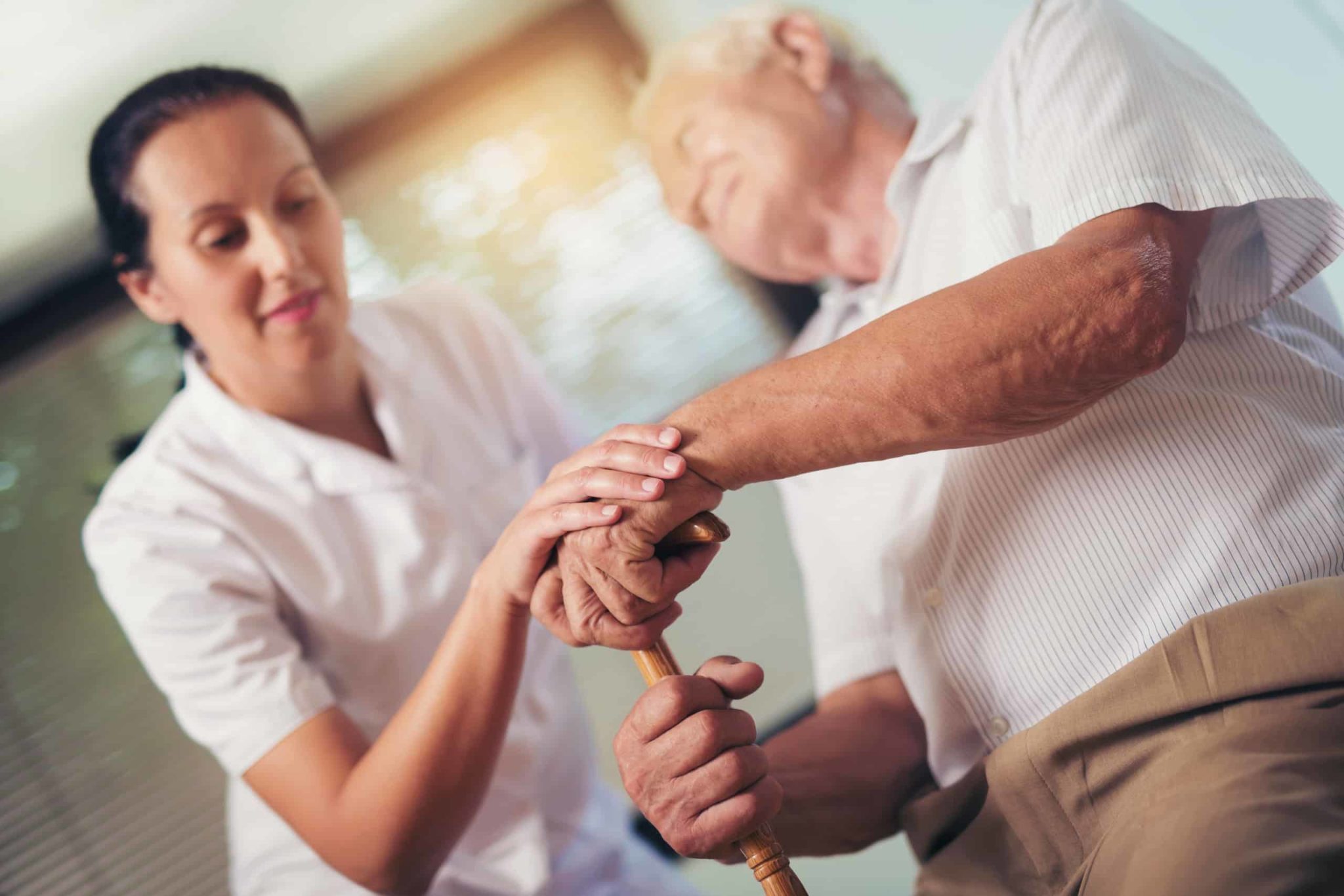Modify Your Home for Parkinson’s Disease

As one of the most debilitating degenerative disorders, Parkinson’s disease is a condition which unsurprisingly requires much adaptation whether this be to the lifestyle or one’s home.
As such, there is a wide array of mobility tips available for Parkinson’s sufferers and the team here at Premier Care in Bathing has created the following guide for anyone looking for some assistance with what can be a daunting transition.
As Parkinson’s sufferers will already know only too well, the disease can result in extreme fatigue and make getting around the home far more tiring than it had been in previous years. Thankfully, advances in technology and design have meant that this process is far easier than it has been in previous years.
Indeed, even more challenging leisure activities have been made easier by these very same developments and following just some of these tips may assist individuals who have been suffering from Parkinson’s; whether this has been for many years or more recently.
Get a FREE Brochure
Fill out the form in seconds and discover our full range of assisted bathing showers and baths.

The Basics
Although home assistance for Parkinson’s sufferers is readily available, implementing the basics could well eliminate the need for such action, especially in the early years of the condition. For example;
- Fire hazards are a cause for concern for everyone. Removing these can give fantastic peace of mind to all involved. Electric blankets and storage heaters are often the cause of home fires, so taking these out of the home could reduce the risk in the long term.
- Getting to the telephone, especially for older sufferers, can be of paramount importance, especially in the event of an emergency. So, with this in mind, it could be a good idea to purchase an easy-to-use cordless phone so this is to hand at any time of the day. Alternatively, you could consider purchasing a number of handsets to have around your home so that you are always close to one and never need to rush to pick the phone up. The choice is up to you, but in this day and age, it’s useful to have a mobile phone as it has so many useful applications that can make one’s life easier.
- Further to this, having the important numbers that one would need in such an emergency, readily available could be a lifesaver. So, why not have your family, neighbours, police, fire and poison control numbers noted by the handsets around your home? Having these on hand means it’s easy to phone them in a potential emergency.
- Finally, it is important to have smoke detectors (with fully charged batteries) in any home. Do regular checks to ensure that in the event of a fire, these alarms can be well heard. Official advice says to test these once a month – this may seem like a hassle but it’s well worth it for peace of mind. If you can’t reach the smoke detector, then have a friendly neighbour of family member help you with this.
Additions to the Home
The basics will ensure that in the event of an unforeseen circumstance, any individual suffering from Parkinson’s will stand the very best chance of contacting who they need to. However, the aforementioned advances in manufacturing and technology have meant that there are now all kinds of great devices and appliances one can add to the home.
It may well be that you or your loved one has an occupational therapist to assist with exercising and medicines which will improve quality of life no end, but they may also recommend the addition of some assistive, mobility aids which can be easily added to the home.
More and more of these aids are released all the time, but some of the more popular and effective ones include;
- Wheelchair ramps
- Sliding boards
- Built-up utensils
- Reach devices
- Electric mattresses and beds (only brand new, modern models)
Advanced Adaptations
If you would still like to improve your quality of life, then there are still more options available. These all need to be considered carefully and their feasibility will obviously depend on the condition and home in question, but they have all had great results for sufferers of the condition over the years.
Again, doctors and occupational therapists are always available to advise on such things and don’t forget to ask close family members and friends.
- Sit in comfort. There is no point in struggling if getting in and out of chairs has become difficult and uncomfortable. This can be remedied through the use of armrests and straight backs.
- Make sure that furniture in the home is well spaced out so it is as easy as possible for anyone who is less mobile to get around. Knocking into things is not only painful, but it also slows people down considerably.
- A Trapeze Bar or stationery pole can be used to assist with getting in and out of bed.
- Arrange any devices that require a cord, so they are stowed away as these can be a big trip hazard. More and more of these appliances are now available cordless so always go for this option if it is available. Sound-activated and touch lamps are great examples of these devices and are available at an affordable price.
- Install a variety of grab bars and handrails wherever possible around the home. These could mean the difference between an easy journey or a fall so there is no excuse for taking any chances.
- Install a motion activated nightlight to help sufferers during the night. These devices can reduce anxiety, help improve sleep quality and most importantly, provide sleepers with independence.
- If going up and down stairs has become hazardous and the addition of grab bars has not helped then it might be time to consider a stairlift. Although this seems like a drastic measure, modern stairlifts are space-efficient, agile for small or curved stairs and relatively stylish. Not only would this ease the worry of getting up and down the stairs it future-proofs your home and could be the difference between staying in your home and having to relocate to the bungalow.
Creating a safe and accessible bathroom
A bathroom is an essential part of any housing and is part of everyone's daily routine, no matter their age. For the elderly, this part of their house and daily routine is arguably one of the most dangerous parts of their lives at home due to how hazardous it can be towards those who have low mobility, with risks related to slips, which can cause long-lasting injuries and serious injuries if one were to hit their head when slipping.
Make your bathing area safe by converting your bathroom into a more accessibility-friendly bathroom. This not only transforms the look of your bathroom with a more modern aesthetic, but it also helps prevents slips and trips with the use of additional handlebars, ramps and other disability adaptions. Consider taking a look at our wet room, walk-in showers and walk-in baths we have to offer.
We hope that this guide has helped you. For more information and helpful advice please visit the Parkinson’s UK website.
If you wish to discuss modifying your bathroom for any condition, then you can contact the friendly and helpful Premier Bathrooms team at any time or you can click here to make an enquiry online. It may be preferable to inspect our products prior to any direct contact, if this is the case for you then take a look at our range of easy-access baths and showers.

